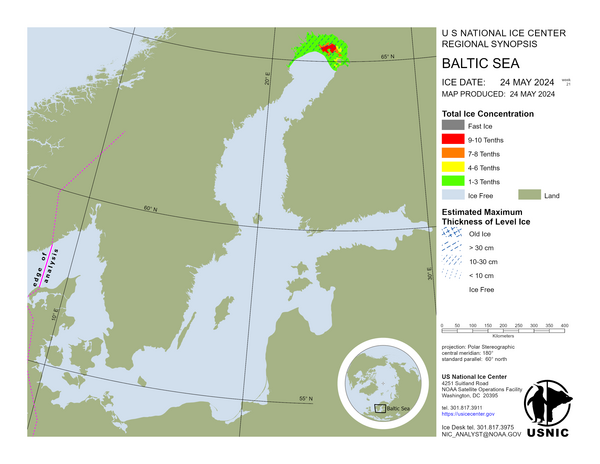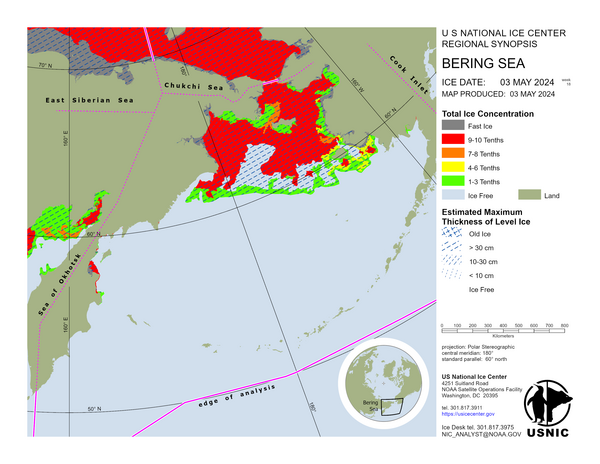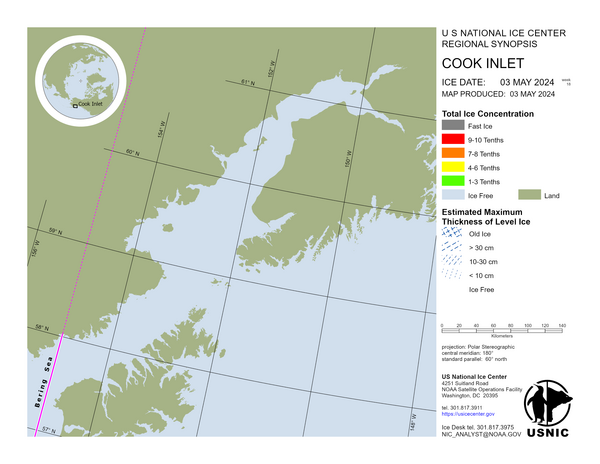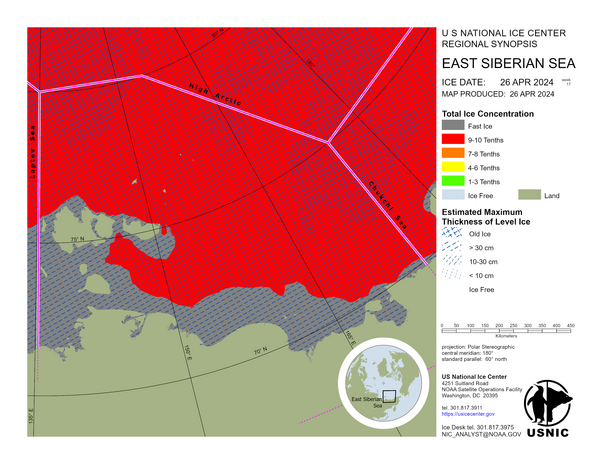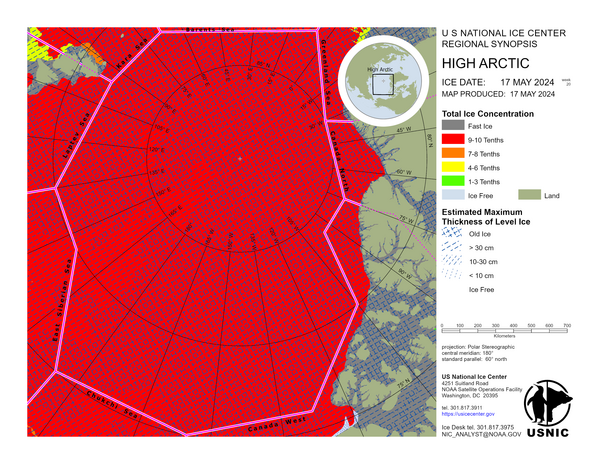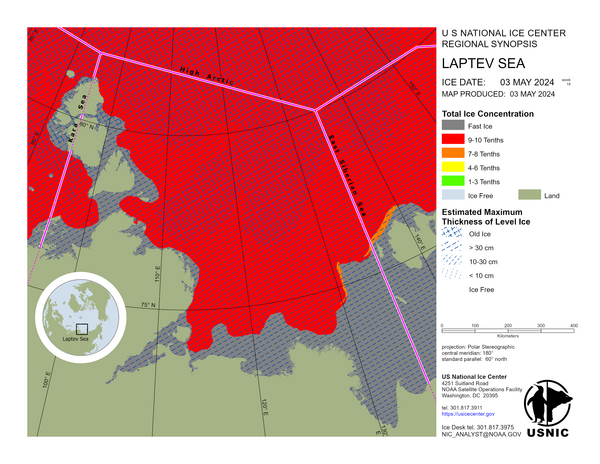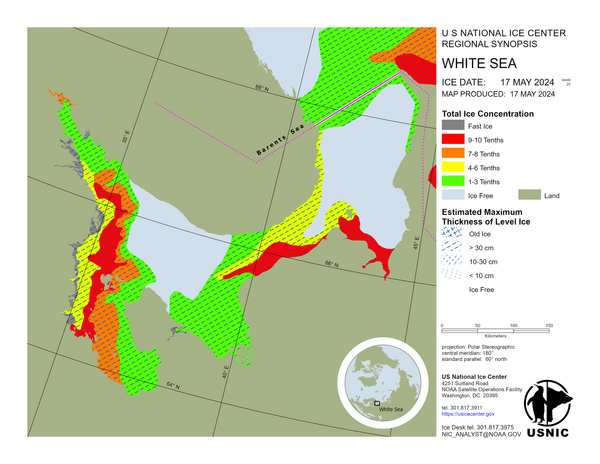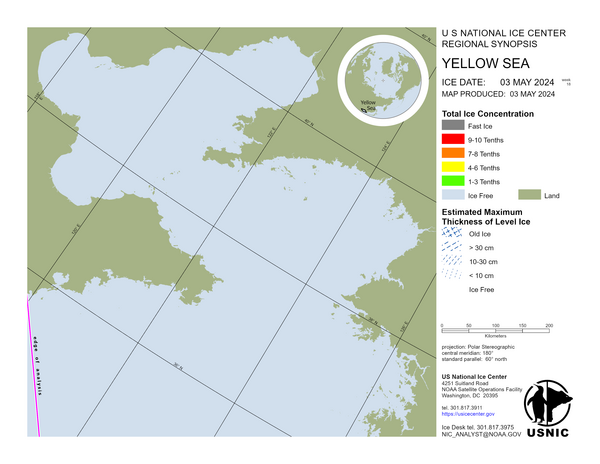Arctic Regional Synopsis
Regional charts and associated synopsis write-up capture ice and environmental conditions throughout the Arctic which are based on the U.S. National Ice Center’s weekly analysis. Charts and synopses are updated weekly on Fridays. Note: Baltic Sea analysis is provided by the Finnish Meteorological Institute. The Canadian Archipelago (Canada East, Canada North, Canada West, and Hudson Bay) analysis is provided by the Canadian Ice Service.
Regional Quick Access
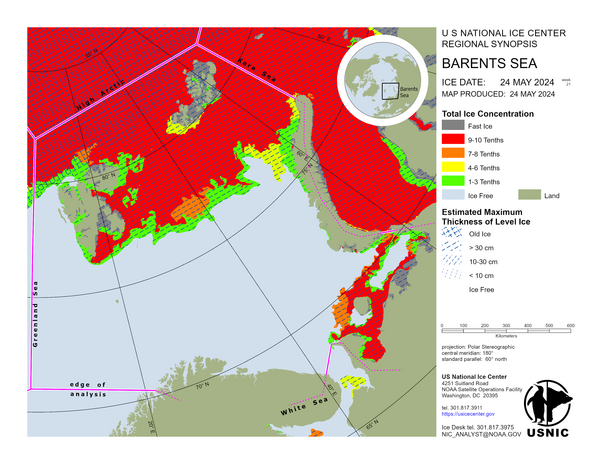
Barents Sea
A storm system moved through the northwest and eastern Barents Sea, degrading much of the ice edge and reducing ice within the fjords of Svalbard. Warmer air temperatures in the region further contributed to the loss of sea ice. In the southern Barents Sea near Khaypudyr Bay, winds up to 14 knots drove significant sea ice movement. Air temperatures ranged from –12°C to –16°C, supporting continued formation of new and young ice, with young ice remaining the dominant type across the region.
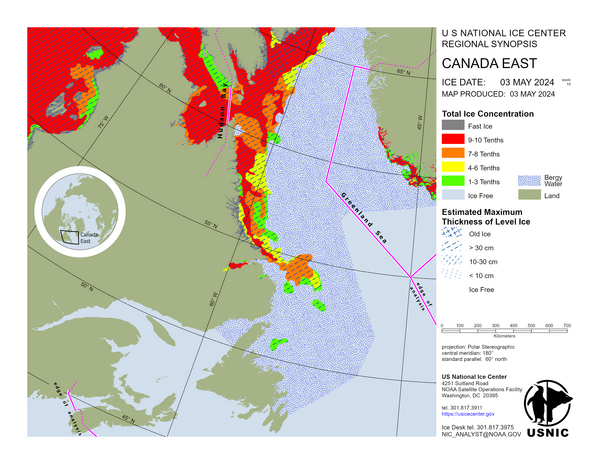
Canada East
Foxe Basin contains mainly young ice with a small zone of open water it its extreme south. Some first-year ice is now present throughout Foxe Basin. Western Baffin Bay consists mainly of first-year ice and young ice with some multi-year/secondyear ice present. Eastern Baffin Bay contains mostly young and new ice. Davis Strait is mostly bergy water with some ice present along eastern Baffin Island. Cumberland Sound consist mainly of bergy water with some young and new ice present in isolated coastal areas.
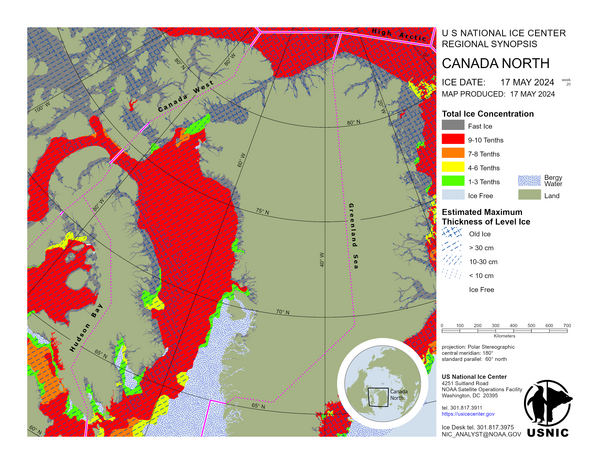
Canada North
The Arctic Ocean contains mostly multi-year ice with some second-year ice and first-year ice present. Nares Strait contains mostly multi-year ice with some second-year ice, first-year ice and young ice present. The ice in Eureka Sound is fast and consists mainly of first-year ice with some multi-year/secondyear ice present. The ice around the eastern Queen Elizabeth Islands is fast and contains a mixture of multi-year, second-year ice and first-year fast ice. Jones Sound is mostly fast and is predominantly first-year ice with some multi-year ice present. Lancaster Sound is mostly first-year ice with some multi-year ice, second-year ice and young ice present. The Gulf of Boothia consists mainly of first-year ice with some young ice present.
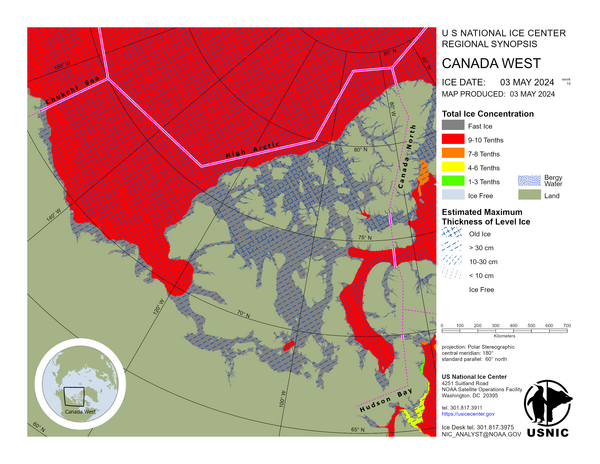
Canada West
The Queen Elizabeth Islands waters are fast multi-year, second-year, and first-year ice. M’Clure Strait and Viscount Melville Sound contain predominantly multi-year ice, with some second-year and first-year ice. The ice in Viscount Melville Sound is fast. Barrow Strait consists mainly of first-year ice including a trace of multi-year and second-year ice. M’Clintock Channel is predominantly first-year ice with a trace of multi-year ice. Some fast ice is present along the coast. Peel Sound is covered by fast first-year ice with a trace of multi-year ice. Larsen Sound contains first-year ice and young ice, with a trace of multi-year ice. Queen Maud Gulf, Coronation Gulf, and St. Roch Bassin are covered by fast first-year ice. Amundsen Gulf is predominantly first-year ice including an are with smaller amounts of multiyear ice in the northern section. Canada Basin is predominantly multi-year ice with some second-year ice and first-year ice. The Beaufort Sea is predominantly first-year ice with some multi-year and second year ice further offshore.
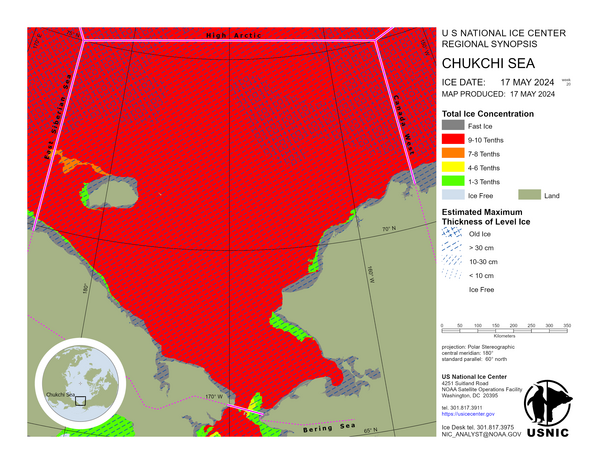
Chukchi Sea
Slight eastward drift was observed over the Chukchi Sea, allowing for the compaction of ice along the Alaskan coast. Isolated northern drift off of the Russian coast allowed for a polynya to open, which has since filled in with new and young ice. The ice edge has pushed into the southern Chukchi Sea as a result of strong southerly winds in the western side of the Bering Sea.
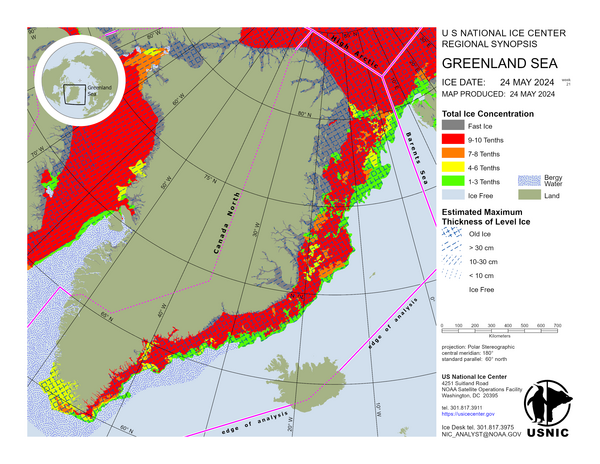
Greenland Sea
In the Greenland Sea, air temperatures range from -26°C in the north to -2°C in the south. Sea ice has drifted between 20 and 130 nautical miles over the past week. This has allowed old ice to drift southward to 65°N, near the town of Tasiilaq. A large area of newly formed fast ice has developed this week between 75°N to 80°N.
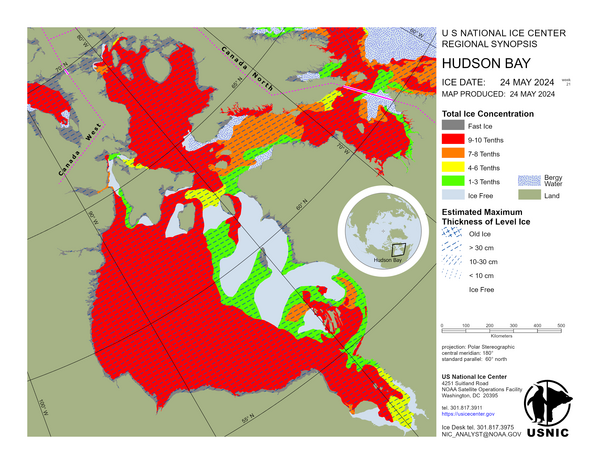
Hudson Bay
Northern Hudson Bay continues to see an increase in new and young ice along the northwestern coastline and around the shores of Southampton Island. Small amounts of new ice are also present along the eastern coastline and near Coats and Mansel Islands. Southern Hudson Bay remains mostly open water, with patches of new and young ice forming along the western coast. James Bay is almost covered with new and young ice. Hudson Strait is primarily bergy water, with small areas of new ice developing along the southern coast and in the central part of the strait. Ungava Bay consists mainly of bergy water, with some new and young ice continuing to along the coasts. Frobisher Bay is mostly bergy water, with new and young ice development near Iqaluit. Labrador Sea remains bergy water, with some new and young ice forming along the coastline. Lake Melville has new and young ice with consolidated grey-white ice in the extreme western section.
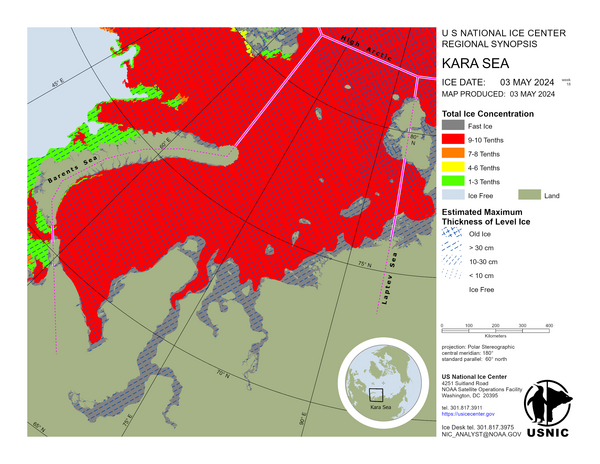
Kara Sea
Winds reached up to 18 knots along coastal areas of the Kara Sea, including the Yamal Peninsula and nearby islands, pushing ice away from the shore and allowing new ice to form in its place. Temperatures dropped this week to –16°C to –34°C, supporting rapid sea ice development. Drift patterns were highly dynamic, with ice moving clockwise in some regions and counterclockwise in others.
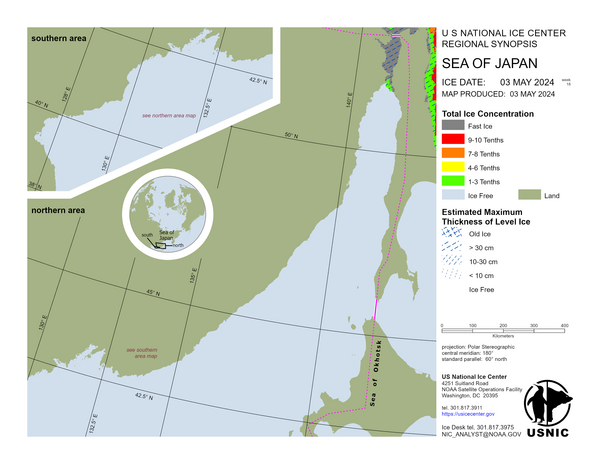
Sea of Japan
In the Sea of Japan, ice in the Tartar Strait is predominantly fast ice this week. Due to sustained cold temperatures, ice coverage has expanded by approximately 148 nautical miles since last week. Ice thickness continues to increase in the northern portion of Peter the Great Bay, the sea ports of Vladivostok remain ice free. The Sea of Japan South remains sea ice free.
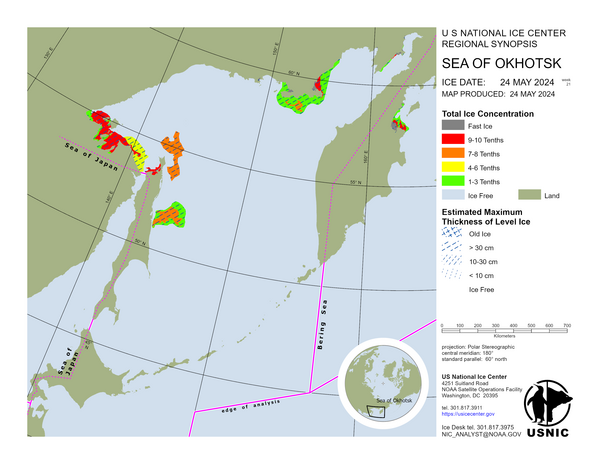
Sea of Okhotsk
In the Sea of Okhotsk, multiple storm systems since last week have melted the sea ice along the western side of the Kamchatka Peninsula. The only area experiencing ice growth during that period is the western portion of the Sea of Okhotsk, where ice has extended 60-120 nautical miles from the coast. Ice has also grown 160 nautical miles along the eastern side of Sakhalin Island. The western Sea of Okhotsk is experiencing air temperatures in the range of -04°C to as cold as -30°C along the Russian coastline. These cold air temperatures are priming the sea water for rapid ice growth.
